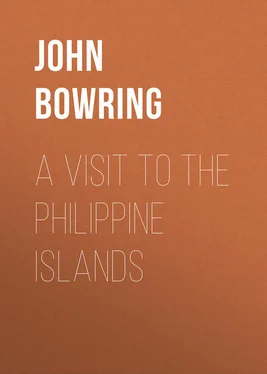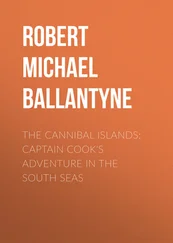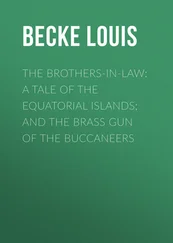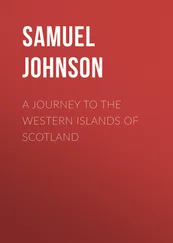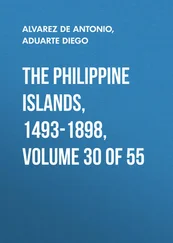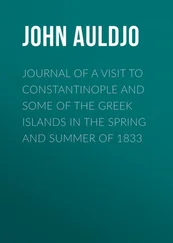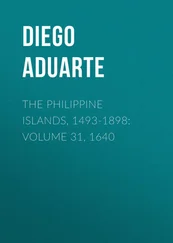John Bowring - A Visit to the Philippine Islands
Здесь есть возможность читать онлайн «John Bowring - A Visit to the Philippine Islands» — ознакомительный отрывок электронной книги совершенно бесплатно, а после прочтения отрывка купить полную версию. В некоторых случаях можно слушать аудио, скачать через торрент в формате fb2 и присутствует краткое содержание. Жанр: foreign_antique, foreign_prose, на английском языке. Описание произведения, (предисловие) а так же отзывы посетителей доступны на портале библиотеки ЛибКат.
- Название:A Visit to the Philippine Islands
- Автор:
- Жанр:
- Год:неизвестен
- ISBN:нет данных
- Рейтинг книги:3 / 5. Голосов: 1
-
Избранное:Добавить в избранное
- Отзывы:
-
Ваша оценка:
- 60
- 1
- 2
- 3
- 4
- 5
A Visit to the Philippine Islands: краткое содержание, описание и аннотация
Предлагаем к чтению аннотацию, описание, краткое содержание или предисловие (зависит от того, что написал сам автор книги «A Visit to the Philippine Islands»). Если вы не нашли необходимую информацию о книге — напишите в комментариях, мы постараемся отыскать её.
A Visit to the Philippine Islands — читать онлайн ознакомительный отрывок
Ниже представлен текст книги, разбитый по страницам. Система сохранения места последней прочитанной страницы, позволяет с удобством читать онлайн бесплатно книгу «A Visit to the Philippine Islands», без необходимости каждый раз заново искать на чём Вы остановились. Поставьте закладку, и сможете в любой момент перейти на страницу, на которой закончили чтение.
Интервал:
Закладка:
The river Pasig is the principal channel of communication with the interior. It passes between the commercial districts and the fortress of Manila. Its average breadth is about 350 feet, and it is navigable for about ten miles, with various depths of from 3 to 25 feet. It is crossed by three bridges, one of which is a suspension bridge. The daily average movement of boats, barges, and rafts passing with cargo under the principal bridge, was 277, escorted by 487 men and 121 women (not including passengers). The whole number of vessels belonging to the Philippines was, in 1852 (the last return I possess), 4,053, representing 81,752 tons, and navigated by 30,485 seamen. Of these, 1,532 vessels, of 74,148 tons, having 17,133 seamen, belong to the province of Manila alone, representing three-eighths of the ships, seven-eighths of the tonnage, and seventeen-thirtieths of the mercantile marine. The value of the coasting trade in 1852 is stated to have been about four and a-half millions of dollars, half this value being in abacá (Manila hemp), sugar and rice being the next articles in importance. The province of Albay, the most southern of Luzon, is represented by the largest money value, being about one-fourth of the whole. On an average of five years, from 1850 to 1854, the coasting trade is stated to have been of the value of 4,156,459 dollars, but the returns are very imperfect, and do not include all the provinces. The statistical commission reports that on an examination of all the documents and facts accessible to them, in 1855, the coasting trade might be fairly estimated at 7,200,459 dollars.
At a distance of about three miles from Binondo, on the right bank of the Pasig, is the country house of the captain-general, where he is accustomed to pass some weeks of the most oppressive season of the year: it has a nice garden, a convenient moveable bath, which is lowered into the river, an aviary, and a small collection of quadrupeds, among which I made acquaintance with a chimpanzee, who, soon after, died of a pulmonary complaint.
CHAPTER II
VISIT TO LA LAGUNA AND TAYABAS
Having arranged for a visit to the Laguna and the surrounding hills, whose beautiful scenery has given to the island of Luzon a widely-spread celebrity, we started accompanied by the Alcalde Mayor, De la Herran, Colonel Trasierra, an aide-de-camp of the Governor, appointed to be my special guide and guardian, my kind friend and gentlemanly companion Captain Vansittart, and some other gentlemen. The inhabitants of the Laguna are called by the Indians of Manila Tagasilañgan , or Orientals. As we reached the various villages, the Principalia , or native authorities, came out to meet us, and musical bands escorted us into and out of all the pueblos. We found the Indian villages decorated with coloured flags and embroidered kerchiefs, and the firing of guns announced our arrival. The roads were prettily decorated with bamboos and flowers, and everything proclaimed a hearty, however simple welcome. The thick and many-tinted foliage of the mango – the tall bamboos shaking their feathery heads aloft – the cocoa-nut loftier still – the areca and the nipa palms – the plantains, whose huge green leaves give such richness to a tropical landscape – the bread-fruit, the papaya, and the bright-coloured wild-flowers, which stray at will over banks and branches – the river every now and then visible, with its canoes and cottages, and Indian men, women, and children scattered along its banks. Over an excellent road, we passed through Santa Ana to Taguig, where a bamboo bridge had been somewhat precipitately erected to facilitate our passage over the stream: the first carriage got over in safety; with the second the bridge broke down, and some delay was experienced in repairing the disaster, and enabling the other carriages to come forward. Taguig is a pretty village, with thermal baths, and about 4,000 inhabitants; its fish is said to be particularly fine. Near it is Pateros, which no doubt takes its name from the enormous quantity of artificially hatched ducks ( patos ) which are bred there, and which are seen in incredible numbers on the banks of the river. They are fed by small shell-fish found abundantly in the neighbouring lake, and which are brought in boats to the paterias on the banks of the Pasig. This duck-raising is called Itig by the Indians. Each pateria is separated from its neighbour by a bamboo enclosure on the river, and at sunset the ducks withdraw from the water to adjacent buildings, where they deposit their eggs during the night, and in the morning return in long procession to the river. The eggs being collected are placed in large receptacles containing warm paddy husks, which are kept at the same temperature; the whole is covered with cloth, and they are removed by their owners as fast as they are hatched. We saw hundreds of the ducklings running about in shallow bamboo baskets, waiting to be transferred to the banks of the river. The friar at Pasig came out from his convent to receive us. It is a populous pueblo, containing more than 22,000 souls. There is a school for Indian women. It has stone quarries worked for consumption in Manila, but the stone is soft and brittle. The neighbourhood is adorned with gardens. Our host the friar had prepared for us in the convent a collation, which was served with much neatness and attention, and with cordial hospitality. Having reached the limits of his alcadia , the kind magistrate and his attendants left us, and we entered a falua (felucca) provided for us by the Intendente de Marina, with a goodly number of rowers, and furnished with a carpet, cushions, curtains, and other comfortable appliances. In this we started for the Laguna, heralded by a band of musicians. The rowers stand erect, and at every stroke of the oar fling themselves back upon their seats; they thus give a great impulse to the boat; the exertion appears very laborious, yet their work was done with admirable good-humour, and when they were drenched with rain there was not a murmur. In the lake (which is called Bay ) is an island, between which and the main land is a deep and dangerous channel named Quinabatasan, through which we passed. The stream rushes by with great rapidity, and vessels are often lost in the passage. The banks are covered with fine fruit trees, and the hills rise grandly on all sides. Our destination was Santa Cruz, and long before we arrived a pilot boat had been despatched in order to herald our coming. The sun had set, but we perceived, as we approached, that the streets were illuminated, and we heard the wonted Indian music in the distance. Reaching the river, we were conducted to a gaily-lighted and decorated raft, which landed us, – and a suite of carriages, in one of which was the Alcalde, who had come from his Cabacera , or head quarters, to take charge of us, – conducted the party to a handsome house belonging to an opulent Indian, where we found, in the course of preparation, a very handsome dinner or supper, and all the notables of the locality, the priest, as a matter of course, among them, assembled to welcome the strangers. We passed a theatre, which appeared hastily erected and grotesquely adorned, where, as we were informed, it was intended to exhibit an Indian play in the Tagál language, for our edification and amusement. I was too unwell to attend, but I heard there was much talk on the stage (unintelligible, of course, to our party), and brandishing of swords, and frowns and fierce fighting, and genii hunting women into wild forests, and kings and queens gaily dressed. The stage was open from the street to the multitude, of whom many thousands were reported to be present, showing great interest and excitement. I was told that some of the actors had been imported from Manila. The hospitality of our host was super-abundant, and his table crowded not only with native but with many European luxuries. He was dressed as an Indian, and exhibited his wardrobe with some pride. He himself served us at his own table, and looked and moved about as if he were greatly honoured by the service. His name, which I gratefully record, is Valentin Valenzuela, and his brother has reached the distinction of being an ordained priest.
Читать дальшеИнтервал:
Закладка:
Похожие книги на «A Visit to the Philippine Islands»
Представляем Вашему вниманию похожие книги на «A Visit to the Philippine Islands» списком для выбора. Мы отобрали схожую по названию и смыслу литературу в надежде предоставить читателям больше вариантов отыскать новые, интересные, ещё непрочитанные произведения.
Обсуждение, отзывы о книге «A Visit to the Philippine Islands» и просто собственные мнения читателей. Оставьте ваши комментарии, напишите, что Вы думаете о произведении, его смысле или главных героях. Укажите что конкретно понравилось, а что нет, и почему Вы так считаете.
